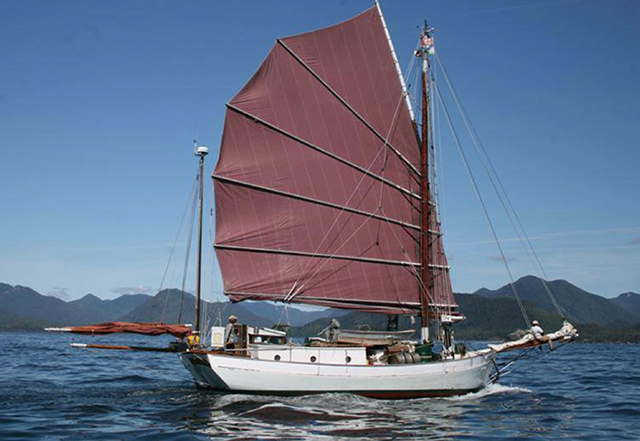Junk Rig

Junk rig on a modern 18m hull
Junk rig was pioneered on Junks were developed during the Song Dynasty (960–1279) and employed on seagoing vessels as early as the 2nd century BC They evolved in the later dynasties, and were used throughout Asia for extensive ocean voyages. Traditional Junks are still found, throughout south east Asia, particularly China. Today there exist also a growing number of modern recreational junk-rigged sailboats.
In 1960 Lt. Col. Herbert George "Blondie" Hasler, sailed in the first Observer Single-handed Transatlantic Race from Plymouth to New York. His yacht was a junk-rigged modified Folkboat called Jester, which at 25-foot (7.6 m), was one of the smallest boats in the race.
The Jester relied on a junk rig to reduce the physical effort of handling a conventional rig single-handed. Safety was also increased as the junk rig enabled all sail-handling to be completed from the safety of a central control hatch. Hasler realised that he could sail Jester across the Atlantic without ever leaving the cabin. Hasler in Jester finished second, taking 48 days to cross the Atlantic.
Wikipedia comments :
“For long travels with few crew, the simplicity of the junk rig in terms of construction, maintenance and handling makes it an important alternative to more prevalent designs. Most notably the safety that follows from extremely simple reefing, which is particularly important with few crew and deteriorating conditions, minimizes the need to work on deck while exposed to bad weather. Simple construction means lower cost and simpler repairs”.
You can download here an article by Arne Kverneland on Junk Rig for Beginners